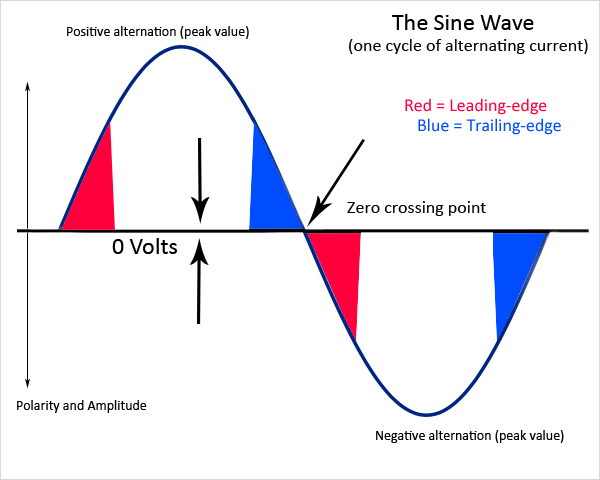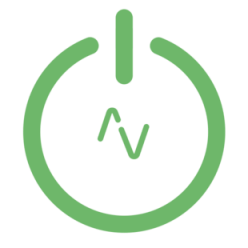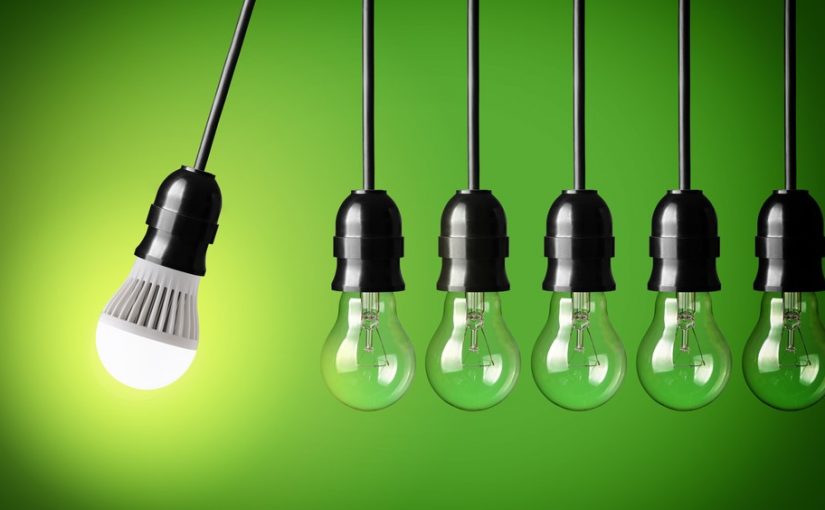LightwaveRF is a brilliant system for getting into home automation. It enables you to install their wireless (RF) transmitting switches in place of your normal light switches and plug sockets and offer control from your phone/laptop etc. I much prefer these units over others on the market as they give a very nice premium look especially in their stainless steel finishes.
Lightwave RF light switches are always dimmers. Unfortunately (yet) they don’t offer a straight “switch” and because of this it can cause some issues if you’re planning to use them with LED bulbs. I’ve had the chance to test a few and would like to offer my conclusions along with some information.
There are 2 types of lighting dimmers. Trailing edge and leading edge.
This refers to the point on the currents “sine wave” at which they operate.

Lightwave in-wall switch dimmers are classed as Trailing edge dimmers and will require bulbs (LED) that are compatible with trailing edge dimmers.
Lightwave used to offer a selection of tested LEDS via their old reseller Megaman but more recently this information is harder to come by.
Thankfully Lightwave must have had some serious investment lately and their website/literature has had a bit of an upgrade.
They offer a compatibility chart here
Flickering And Buzzing
LEDS and dimmers are relatively new technologies and have only really been round for a couple of years. When using them with lightwaveRF you must take care to order ones which are compatible or you will get issues.
Cheaper bulbs may show that they support dimming however it will never tell you what kind of dimming. If you use bulbs with the wrong “edge” you will get buzzing noises from the LEDS which is highly annoying.
Another issue of using the wrong kind of bulbs is flickering or strobing. This occurs when the LED cannot control it’s operation at lower currents (dimmed) at this point the LED will flash/strobe. In some cases when you turn the LED dimmer OFF it will still remain lit very dimly or flash.
Minimum Loads
Another “problem” with LEDS is that they draw much less power than halogen bulbs, although this is good for your wallet and the environment the dimmer requires a certain load before it will turn on.
A typical LED GU10 downlight will be around 4-5watts where as the lightwave dimmers require around 5-7 watts to be able to function correctly.
As the load is not high enough the LED may flicker, or not turn fully off, or work at all.
The solution is to add 2 bulbs, luckily downlights are usually installed with many lights on the same circuit so this is less of a problem.
It may however be a problem in smaller rooms, toilets for example where usually 1 light fixture is present. This will require a higher wattage bulb in order to meet the requirement.
If you still struggle you can always fit a halogen bulb, these will meet the minimum loads no problem.
Maximum Loads – Gen 1
When using Halogen bulbs the 1-2 gang dimmer can take a max of 250W which equals 4x 60W bulbs.
The 3-4 gang switches can handle 210W or 3 60W bulbs.
When using LEDS the maximum load is 60watts, LEDS use less wattage so this would be 12 5W LEDS however lightwave state that 10 should be the maximum.
Halogen Lamps
Halogen or filament bulbs can also work with LightwaveRF, the dimming of these is less picky and will work in all situations. Again there are maximum loads the dimmer can take.
Best LED Bulbs
I’ve installed quite a lot of lightwaveRF equipment in my home. Im totalling around 30 devices currently and these cover every room in my house including some outside lighting.
In all my LED compatible downlights i have Phillips Dimmable LEDs 2700k Warm white.
The dimming range is excellent, other people mention there is some slight buzzing from these LEDS but i’ve not had that experience. They are also well priced around £5-7 each.
From reading other articles it seems people also have good experiences with the Kosnic Halo LED 2700k S27 however they seem difficult to get hold of recently. I must test the S40 to see if it performance as well.


Good evening,
A very usefull article. I am just on the start of the journey with LightwaveRF and find their Compatability Chart useless as I am still (for the next year at least) on BC22 light fittings.
I am struggling to find LED bulbs that are suitable, especially when there is only one bulb in use.
At present my hair is starting to be torn out having tried three lots of bulbs already (luckily where I buy them is letting me return them).
Any help would be very appreciated.
Sorry for the very late reply. This blog is something i’ve neglected recently. You’d get away with adding a lighting load resistor. This will make it “appear” that there is more load than there actually is and should make the LED work ok.
Hello Ric, I totally agree with you on the look of the LightwaveRF equipment. I bought the switches prior to the update on the website and I am hoping to install small Led flush fitting panel lights to give modern look to my project.
Have you heard of anyone doing a similar design and if so do you know the manufacturer of the panels.
I’m wanting to use 5000-6000k panels to give a clear white clinical look.
Thanks Brett
The best Lightwave RF summary that I’ve ever read. Thank you so much.
Useful article. Thanks.
However, the statement “Lightwave in-wall switch dimmers are classed as Trailing edge dimmers” is not correct. They can be set to EITHER leading-edge or trailing-edge in the configuration settings in the app.
That might be correct for Gen2, all my posts are here are regarding Gen1 which does not have this function.
I am confused, what is the difference between the load of a halogen bulb vs LED ? Why can the dimmer switch take a higher wattage on Halogen and a lower wattage on LED. I wanted to put a rope LED which has a total wattage of 140w. (using first generation 3 gang lightwave RF)
It’s just the way loading is different between traditional halogen and LED. The 2 types are very different in how they load the dimmers. Just because a dimmer could take 250w of halogen load does not mean it could take 250w of LED load.